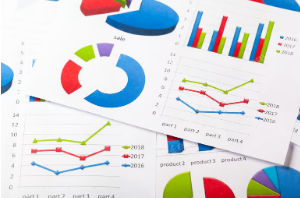Data visualization is an essential skill for turning complex data sets into easily digestible visual representations. Microsoft Excel, a powerful tool widely used for data analysis, offers various advanced techniques for creating impactful visualizations. In this blog post, we will explore some of these techniques to help you better convey your data insights.
1. Dynamic Charts Using Named Ranges
Creating dynamic charts that automatically update when you add new data can significantly enhance your reporting. By using named ranges, you can define a dynamic dataset that feeds into your chart:
- Step 1: Select the data you want to visualize.
- Step 2: Go to the Formulas tab and select Name Manager to create a new named range that references your data.
- Step 3: Use
OFFSETandCOUNTAfunctions to create a dynamic range that grows with your data. - Step 4: In your chart’s data source, use the named range you created instead of fixed data cells.
2. Combination Charts
Combination charts allow you to display different types of data on the same chart, making it easier to interpret complex data sets. For example, you can combine a column chart (for sales) and a line chart (for profit margin) within the same visualization:
- Step 1: Select your data and insert a regular column chart.
- Step 2: Right-click on the series you want to change (e.g., profit margin) and select Change Series Chart Type.
- Step 3: Choose the desired chart type (e.g., Line) and apply it to the selected series.
3. Using Heat Maps
Heat maps are excellent for visualizing data intensity or range. They can help highlight strengths and weaknesses across different categories in your data:
- Step 1: Select the data range you want to visualize.
- Step 2: Go to the Home tab, click on Conditional Formatting, and choose Color Scales.
- Step 3: Select a color gradient that best represents your data, allowing you to visualize high and low values effectively.
4. Bullet Charts for Performance Tracking
Bullet charts offer a clear way to compare performance against goals. This technique simplifies dashboard reporting by visually representing a single measure against defined thresholds:
- Step 1: Create a stacked bar chart with multiple series representing your measure (actual value), target (goal), and ranges (performance thresholds).
- Step 2: Format the chart by changing the fill colors and removing any unnecessary chart elements to emphasize your key performance indicator (KPI).
5. Slicers for Interactive Dashboards
Slicers provide a user-friendly way to filter data in pivot tables and charts, enhancing interactivity in your data visualizations:
- Step 1: Create a pivot table based on your data.
- Step 2: Go to the Insert tab and click on Slicer.
- Step 3: Select the fields you want to filter by, and click OK. You can style and position the slicers on your dashboard.
6. Data Bars for Quick Insights
Data bars offer a quick visual representation of data values directly within cells. This technique is ideal for showing performance metrics alongside raw data:
- Step 1: Highlight the range of cells you want to format.
- Step 2: Navigate to Conditional Formatting and select Data Bars. Choose a color gradient to represent the data visually.
7. Using Sparklines for Trends
Sparklines are mini-charts embedded within cells that effectively display trends over time without taking up too much space:
- Step 1: Select the cell where you want the sparkline to appear.
- Step 2: Go to the Insert tab and click on Sparklines (Line, Column, or Win/Loss).
- Step 3: Specify the data range you want to visualize, and click OK.
These advanced data visualization techniques in Excel can significantly enhance the way you present data, making it easier for stakeholders to grasp insights at a glance. By leveraging dynamic charts, combination charts, heat maps, bullet charts, slicers, data bars, and sparklines, you can create compelling visual stories that drive decision-making and highlight critical performance metrics.
Investing time in mastering these techniques will not only improve your analysis skills but also allow you to communicate your findings more effectively. Embrace the power of Excel, and unlock the full potential of your data!
